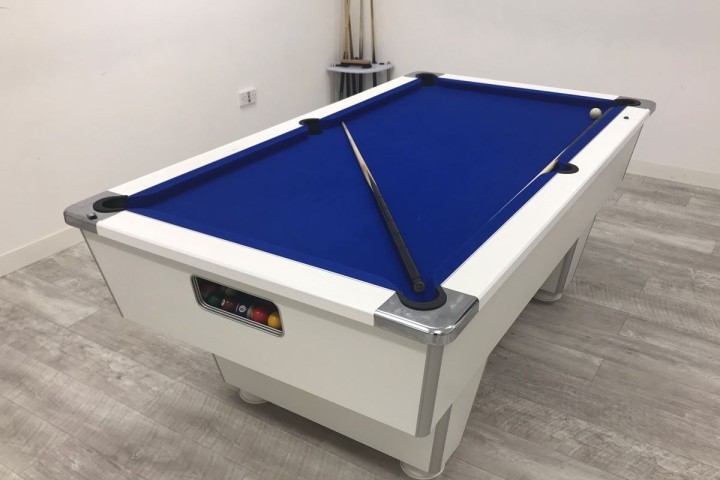The best workplaces align with the organisational culture of a company. They reflect the firm’s story, values and aspirations, and say a lot about the people who work there. Achieving this desirable workplace is no mean feat, but the benefits it promises makes the effort all the more worthwhile. Here, Stewart Simon, managing director of Coulter Office Interiors, discusses how commercial designers can create these culturally-aligned work environments.
Culture is key
Countless studies have demonstrated the significance of a positive workplace culture. It is known to drive employee wellbeing, satisfaction and productivity, as well as being a key tool for attracting and retaining talent. Culture varies from company to company and is shaped by a multitude of factors, including leadership, policies, degree of hierarchy and team values. A workplace should be designed with this individual culture in mind; the goal is that it quite literally becomes part of the furniture.
Culturally-aligned design
There are various tools available to commercial designers to create the perfectly aligned workplace for their clients’ cultural needs. Examples include:
Building structure
Organisations are increasingly fostering a collaborative culture, due its role in promoting teamwork, engagement and innovation; three factors known to lead to business success. This has represented a move away from traditional cellular office design towards open plan spaces, which facilitate social interaction between teams.
Even the most collaborative workplaces require a degree of privacy and there are a number of inventive ways to divide up areas without falling into the isolation-trap. Glass walls and doors provide transparency, while cupboards and storage planters are attractive separators that make great use of space. Acoustics are also key in open place offices and research has found too much noise has a negative impact on employee wellbeing and productivity. Acoustic desk dividers and meeting pods provide both privacy and comfort for teams working together.

Furniture
The style, size and colour of office furniture can say a lot about a company’s culture. For the environmentally focused business, reclaimed, upcycled pieces may be the best choice, whilst collaborative companies may favour rolling chairs and standing height tables. Bright colour choices and unusual styles tend to be found in the creative industries, reflecting the culture of a fun business that thinks outside the box.
As greater importance is placed on the needs of employees, organisations with people-centric cultures often opt for comfortable and ergonomically friendly options to ensure their teams work with minimal physical constraints. A trend rising in popularity in this space is resimercial design, which introduces residential elements to office spaces to create a home-away-from-home.
Technology
Living in a society characterised by the constant advancement of technology and the consumer demand that drives it, there has been a rise in tech and digitally-driven companies. In these cases, the seamless integration of technology within the workplace is crucial to both convey the firm’s tech credentials and enable teams to work more efficiently in what are often fast-paced environments. Tech-enabled spaces are becoming the norm, featuring video conferencing capabilities, data sharing solutions and a plethora of screens and power sockets to enable staff to work privately and collaboratively from almost anywhere.
Breakout rooms
Breakout rooms are a must-have in the 21st century workplace and the extent and style of these spaces often say a lot about the company that introduces them. For businesses with a sociable culture, recreation rooms instil a great sense of fun into the office, whilst boosting morale and interpersonal relationships within the team. These activity-based areas can be kitted out with a range of games, including table tennis, pool tables and arcade machines.
Mental health is high on the agenda for a lot of modern organisations and for those aiming for a calm and easy-going culture, recharge rooms are particularly effective. Relaxation is key and these spaces must be designed with mental and physical rejuvenation in mind. Activities in recharge zones include yoga, meditation, power naps and electronic-free breaks.
Wall decoration
Some companies opt for a softer approach to convey organisational culture. Feature walls are a popular option in these cases, ranging from the incorporation of framed testimonials and award plaques to wall graphics and story walls. For example, many eco-friendly companies are now featuring living walls, made up of plants and shrubbery, in a bid to bring nature indoors and showcase their ‘green’ principles. Wall decorations are a simple, attractive and inexpensive way to reflect both brand identity and culture, plus they provide a great opportunity to impress visiting clients.
Valuable pursuit
Every company has its own culture and deserves a unique workplace that reflects that culture. Commercial designers can help create this by working in collaboration with an organisation and its employees to understand what they stand for and the image they want to project. The value in a culturally-aligned office environment is huge, leading to a happier, more purpose-driven business.
If you would like to find out how your workplace can reflect your organisational culture, contact Coulter Office Interiors for a free assessment today on 01772 702555.
Enjoyed this? Read more from Coulter Office Interiors






















